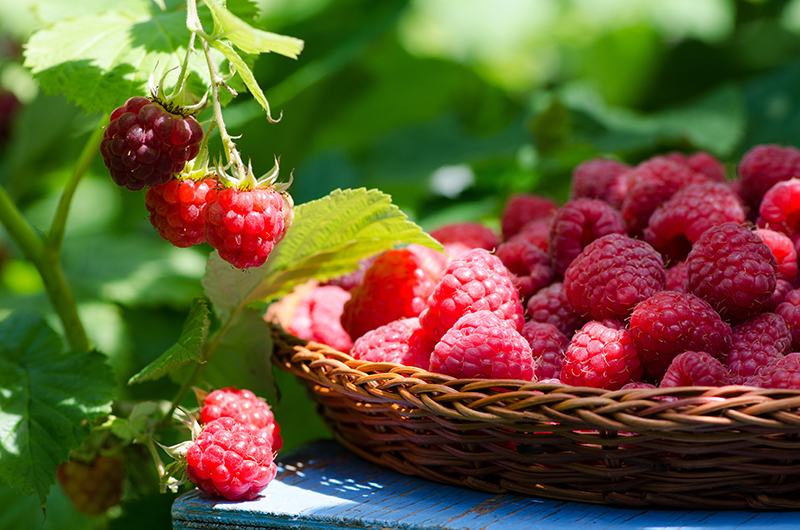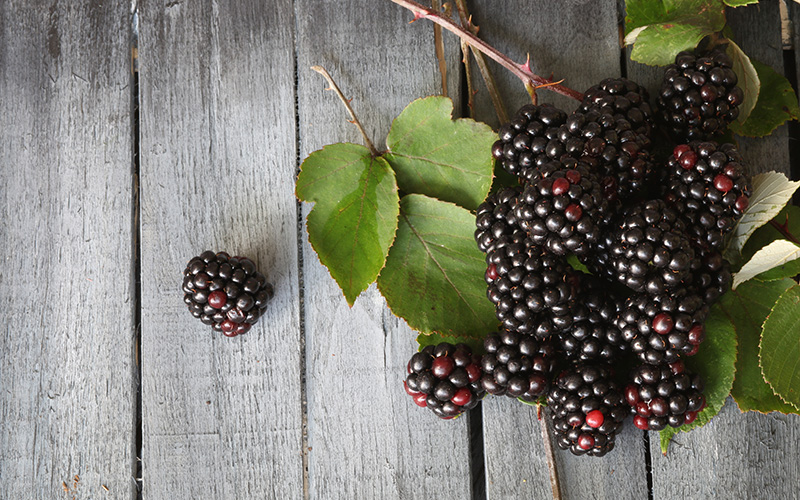What's in a Name?
Raspberries & Blackberries
It’s a bit of a challenge to know what to collectively call raspberries and blackberries. In our organization, we historically called them “brambles”, and until 2008, our association was called the “North American Bramble Growers Association.” However, the term “caneberry” is increasingly coming into use, starting among scientific, regulatory, and marketing communities across the country and now getting better known among growers, gardeners, and consumers. It’s a good term because because they grow on woody stems called canes. Whichever you use, the terms describe plants belonging to the genus Rubus, of which the most commonly known — and enjoyed — are the raspberry and blackberry. There are also some hybrids between the two, such as boysenberries and loganberries. Saying “bramble” or “caneberry” is just a quick way to say “Rubus species” or “raspberries, blackberries, and related plants.” The word “bramble” is going out of use as it brings to mind the tangled, thorny “briar patch” that Brer Rabbit was tossed into, but today’s cultivated blackberry and raspberry plantings are a lot more accessible and easier to pick — and many have no thorns whatsoever.








More Botany
The genus Rubus contains over 740 species that are distributed from tropical to subarctic regions. Most of these are perennial, deciduous, woody shrubs. Raspberries make up a subgenus called Ideobatus and blackberries are a subgenus called Eubatus.
The genus Rubus is in the family Rosaceae. This family also includes roses and many of our other major fruit plants, including strawberries, apples, pears, apricots, and peaches. It may be hard to see what an apple has in common with a strawberry or a blackberry — not only are the fruit very different, but there’s a big difference in size and structure of the plant! However, one obvious similarity is the flower — flowers for all these fruit plants generally have five to seven white or pink petals around a central cluster of yellow stamens.
While caneberry plants have perennial roots, each individual bramble cane lives for only two years. Generally, the new cane comes out of the ground in the spring and grows to about its full size but does not flower. Then, after it winters over, the following summer it flowers and fruits. After fruiting, it dies. The first year, it is called a primocane, and the second year it is called a floricane. So, for most types of raspberries and blackberries, this year’s primocanes are next year’s fruit producers, and the plant has both types at the same time for much of the growing season. However, bramble researchers and growers have developed some varieties and production systems that manipulate this pattern to cause fruiting on primocanes or encourage plants to produce fall fruits.
Many caneberry plants are thorny, or at least prickly, but not all. Blackberries are thornier than raspberries, but breeders have developed a number of thornless blackberry varieties that are now widely grown.
Technically, raspberries and blackberries are not even true berries (true berries include grapes and blueberries). Instead, they are aggregate fruit: clusters of many individual sections called drupelets, each containing one seed. The drupelets grow over a fleshy center core called the receptacle and are held together by tiny hairs. When picked, raspberry fruit detach from the receptacle, so the fruit has a cup-shaped cavity at its center. Blackberry fruit, by contrast, detach from the plant with the receptacle still in the fruit, as part of what we eat. Because of their lack of a central core, raspberry fruit are more delicate and easily crushed than blackberries.
Raspberry fruit come in many different colors, from deep red to purple, to yellow, though the red ones are the most common. Red raspberries are in the species Rubus idaeus, while black raspberries are an entirely different species, Rubus occidentalis. There are a number of hybrids between the two and with other Rubus species. Wineberries, which grow wild in the U.S., and are actually a native of Asia, are another species, Rubus phoenicolasius.
